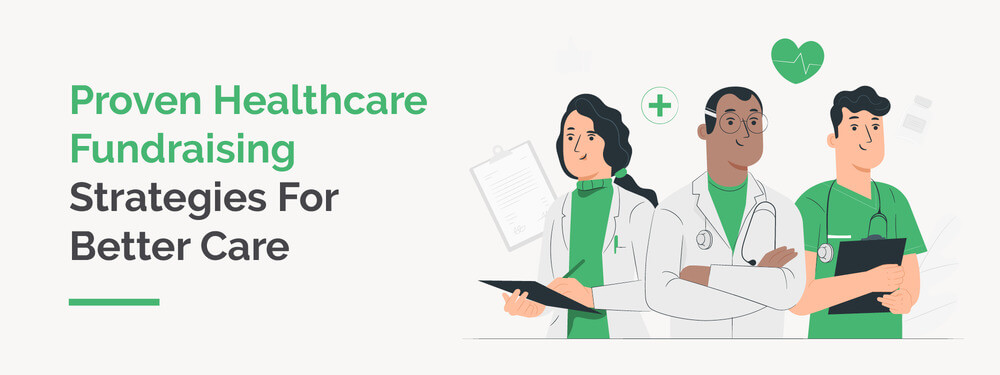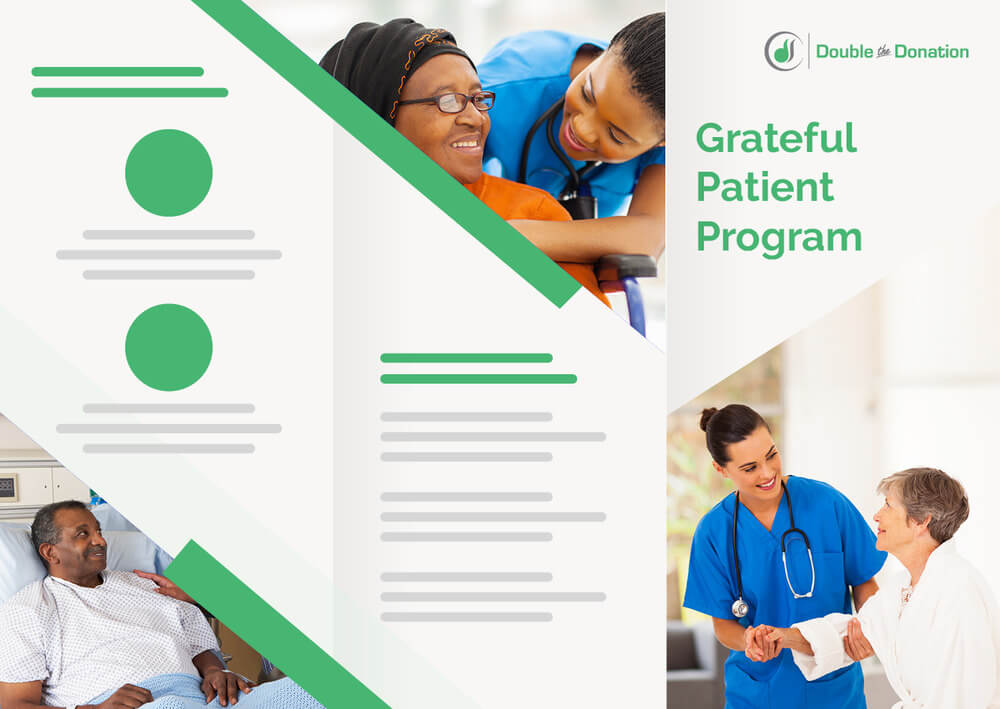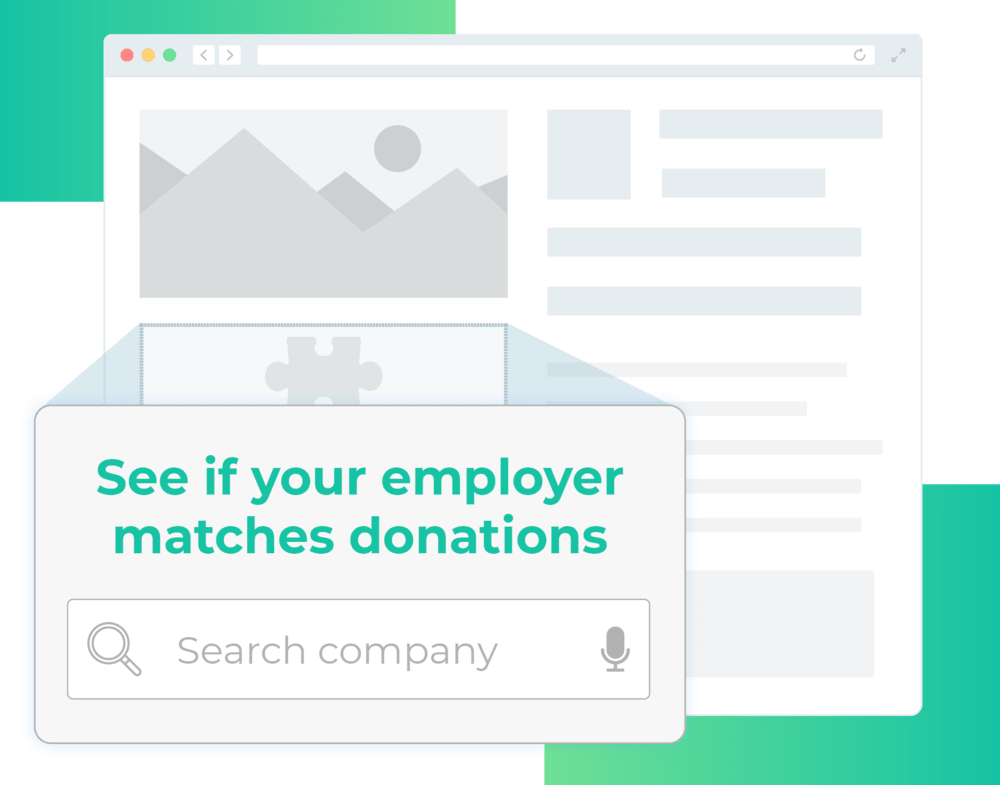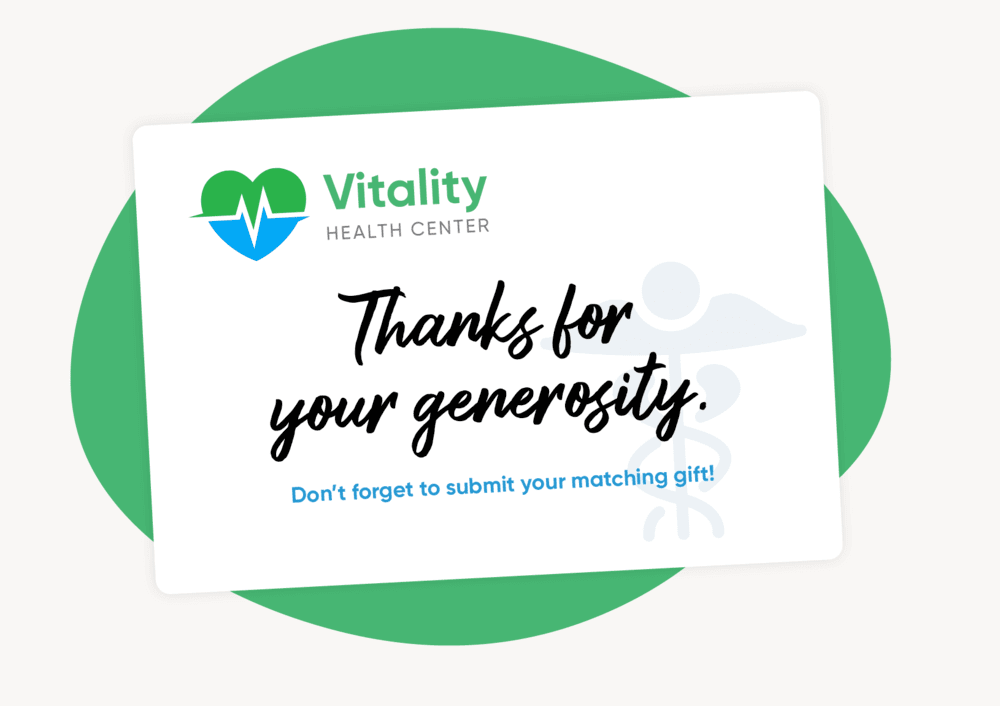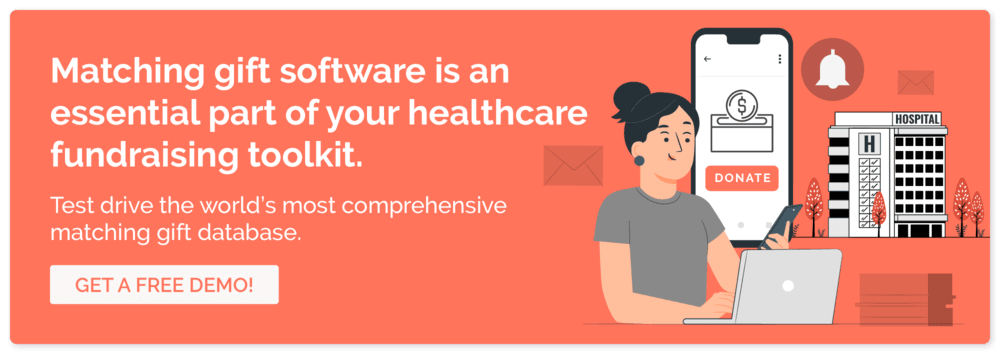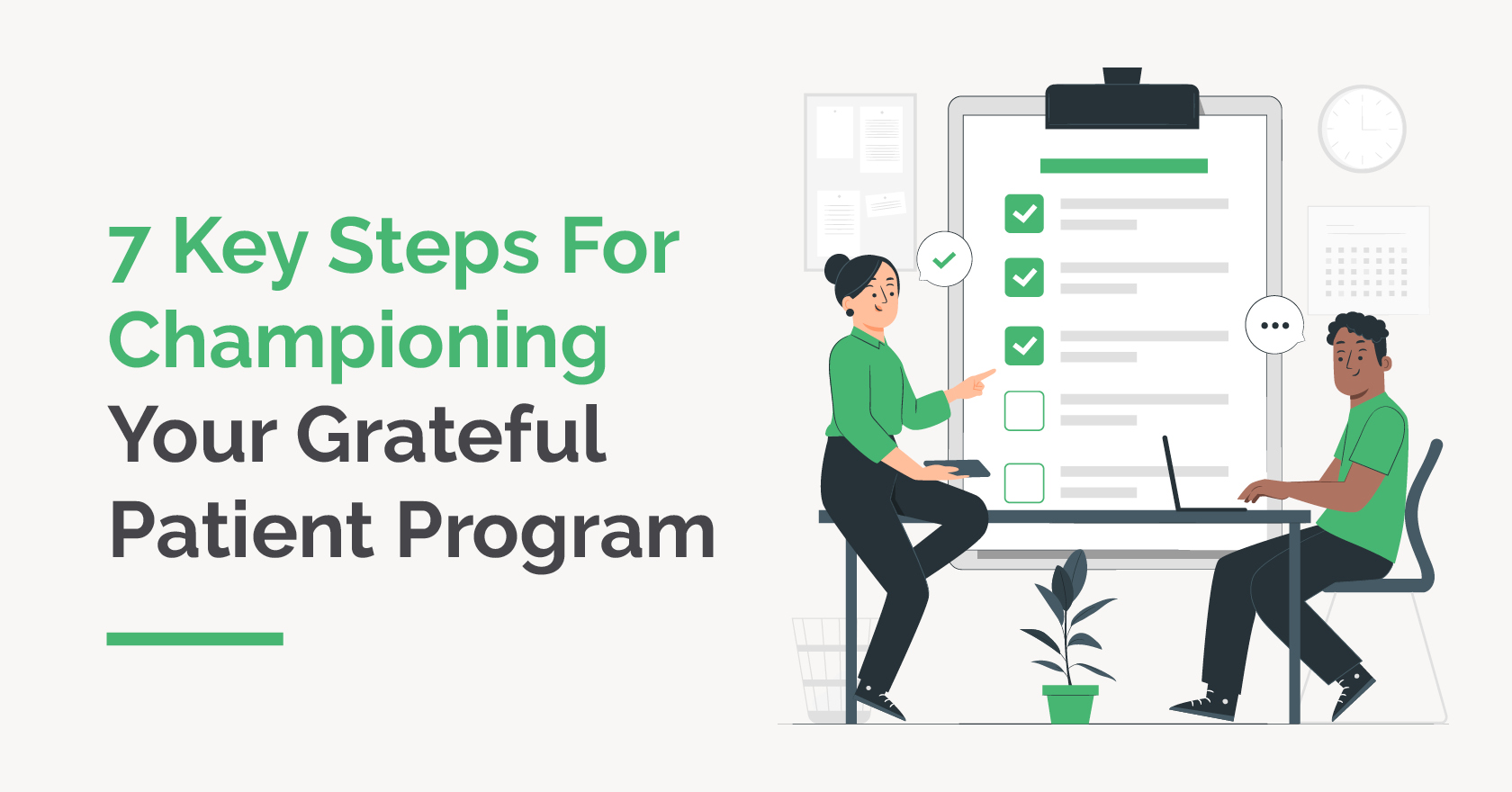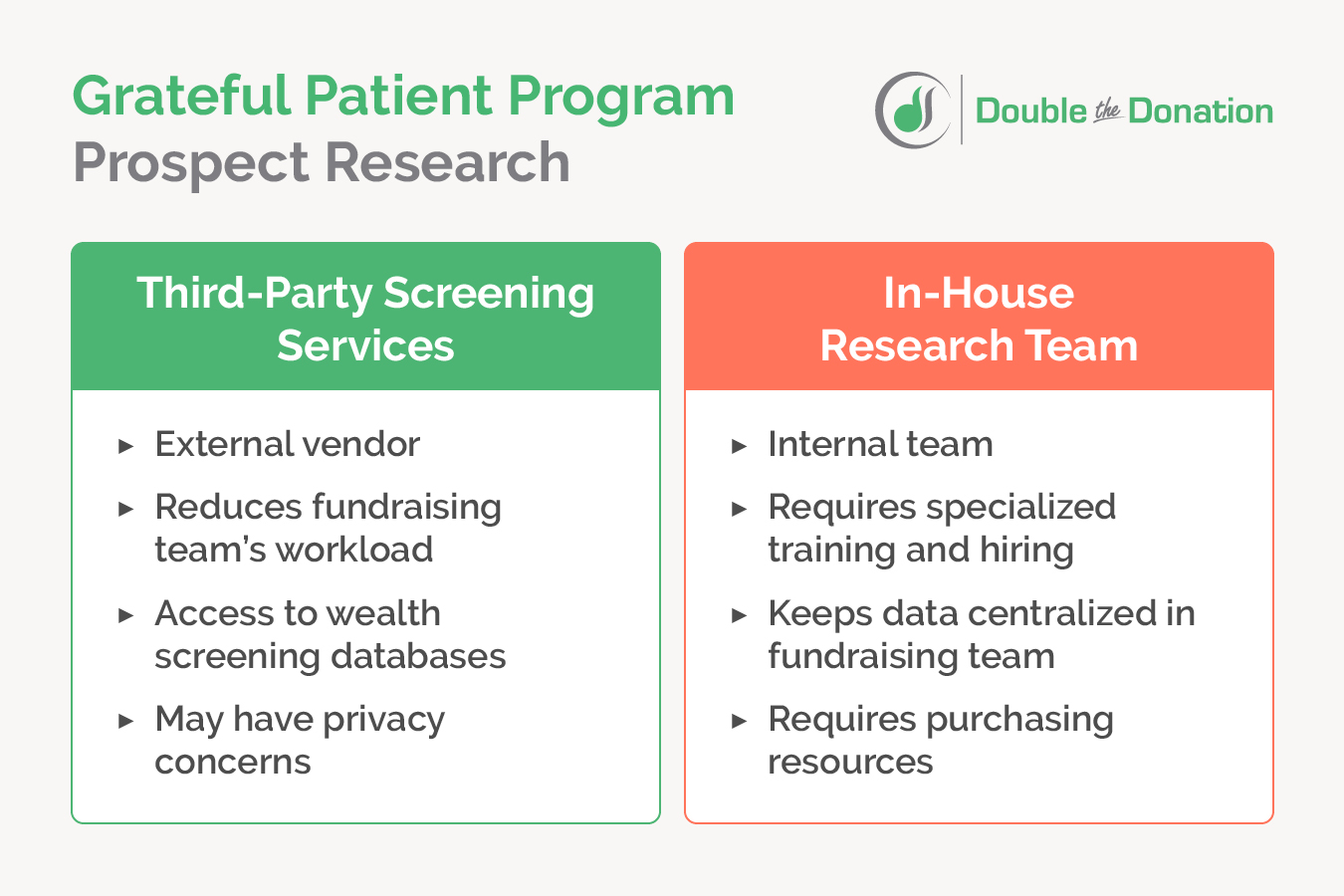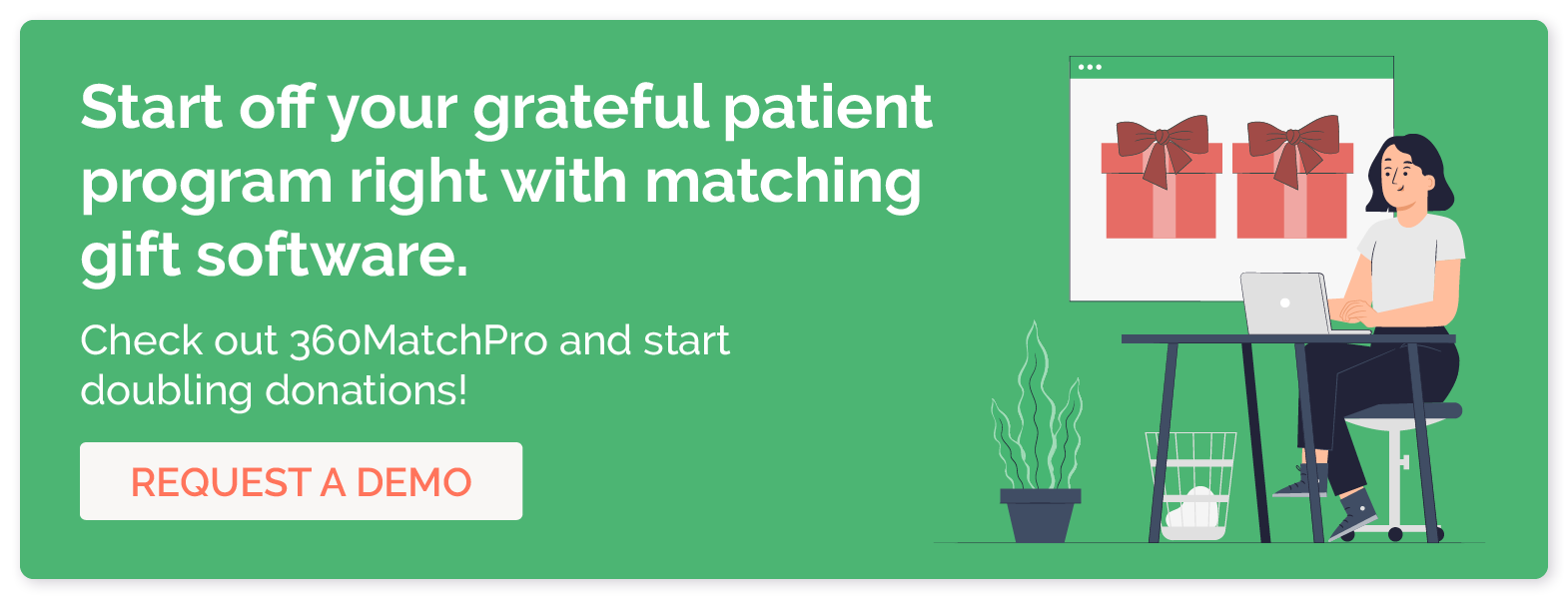9 Proven Healthcare Fundraising Strategies For Better Care
Your healthcare facility works hard to give your patients the best care possible, so it’s only fair that you get some of that love and devotion in return — with fundraising!
Healthcare fundraising is instrumental for securing the necessary staff, equipment, and facility renovations your organization needs to function at maximum capacity. However, many hospital fundraising teams are in the dark about how best to organize their efforts, rally their supporters, and jumpstart a steady flow of donations.
We know how busy your schedule is, so we’ll make this brief: below, you’ll find everything you need to know about healthcare fundraising, including top strategies that no medical institution can do without!
First, we’ll review the basics of healthcare fundraising. Then, we’ll take a closer look at each of these strategies:
- Overcome common healthcare fundraising challenges.
- Maintain a clean CRM for your healthcare fundraising.
- Incorporate corporate philanthropy into your healthcare fundraising.
- Develop a top grateful patients program.
- Host healthcare fundraising meetings about your hospital foundation.
- Send targeted healthcare fundraising communications.
- Create a stellar healthcare fundraising online donation form.
- Teach donors about legacy giving.
- Check in with donors and recognize generosity.
These essential fundraising tactics can save your healthcare facility time, energy, and money so that you can get back to doing what you do best: saving lives. Take a breather from your daily duties and follow along with us; we promise to make it worthwhile!
Healthcare & Hospital Fundraising at a Glance
Before diving into strategizing a new fundraising program or reaching out to donors or sponsors, a refresher may be in order. If you’re new to healthcare fundraising in general or have been delegated fundraising responsibilities for the first time, understanding the broader environment will be invaluable.
We recommend exploring Graham-Pelton’s complete introduction to healthcare fundraising, which answers these questions and provides valuable context for newcomers:
Why do healthcare institutions fundraise?
Graham-Pelton’s guide explains the importance of fundraising like this: “Healthcare fundraising […] enables growth, allowing institutions to expand access, fund research, secure life-saving equipment, and more.”
For context, while payment for services makes up a majority of revenue for many (but not all) healthcare institutions, it rarely covers all expenses. The operating margins of many US hospitals are quite tight, making the growth of operations, services, and programs extremely difficult without sustained increases in funding, as well. Smart healthcare fundraising strategies that deliver strong ROIs can go very far in building an institution’s capacity.
How does fundraising revenue fit into their broader revenue structures?
For hospitals and other institutions, fundraising is just one of many revenue streams. According to the guide linked above, they break down into five general categories:
- Payment for medical services (by patients, insurance companies, and governments)
- Sales (primarily food and goods)
- Grants (from governments and foundations)
- Donations (from individuals and sponsors)
- Endowments and other investment income
Everything besides payment for medical services could be considered fundraising revenue. Within that category, grants, donations, and investment income are generally considered part of healthcare development, a more specific form of revenue generation. The exact structure can vary greatly based on a range of factors, for instance, if a hospital is a research institution. It’s important to note that most fundraising activities are conducted by an associated hospital foundation rather than directly by the institution itself.
This diversity and the complexity of healthcare fundraising mean that many institutions turn to experts to help develop new and improved fundraising or development strategies. Healthcare fundraising consultants are often the right (and safer and more efficient) choice for these organizations. It’s highly recommended to consider hiring external, objective, and compliance-minded partners to help your institution improve its fundraising.
With this context in mind, let’s take a look at some of the specific healthcare fundraising strategies to keep in mind as you audit your current efforts, lay out a strategy, or begin defining your consulting needs.
1. Overcome Common Healthcare Fundraising Challenges.
In the realm of healthcare fundraising, the journey to securing vital funds is often fraught with unique challenges. While the overarching goal is to gather resources for better health services and research, hurdles can impede the process. Understanding these common challenges is crucial for developing effective strategies to overcome them:
- Misconceptions about services: Often, potential donors have preconceived notions or misunderstandings about the services healthcare organizations provide. For instance, a hospital specializing in pediatric care might be perceived as only serving certain age groups or conditions, thus limiting its appeal to a broader donor base. Addressing these misconceptions through clear, transparent communication is essential in aligning donor expectations with the organization’s capabilities.
- Data privacy and prospect research challenges: Healthcare organizations must ensure a delicate balance between complying with data privacy laws like the Health Insurance Portability and Accountability Act (HIPAA) and conducting detailed prospect research. Effective fundraising often relies on identifying potential donors with the capacity and affinity to give. However, regulations limit the use of patient data, making it challenging to personalize fundraising strategies and gather adequate data on potential donors. This can hinder the ability to develop targeted fundraising approaches and build meaningful donor relationships.
- Ethical concerns regarding facilitated access: Donors might expect preferential treatment in healthcare services as a quid pro quo for their donations. This is known as facilitated access and raises ethical questions, as it can lead to inequities in access to care. Establishing clear policies with donors about the non-transactional nature of their contributions is vital for upholding the integrity of the healthcare system.
- Donor stewardship complexities: Nurturing relationships with donors, also known as donor stewardship, is crucial but can be particularly complex in the healthcare context. Donors to healthcare causes often have personal stories or emotional connections to the issues at hand. This necessitates a more sensitive, individualized approach to communication. Balancing the emotional aspects with professional stewardship practices makes healthcare donor stewardship an intricate challenge.
In addressing these challenges, healthcare fundraising professionals must adopt a multifaceted approach, combining sensitivity, adherence to regulations, and strategic communication. Recognizing and tackling these issues is key to building a robust, ethical fundraising framework.
2. Maintain A Clean CRM For Your Healthcare Fundraising.
A customer relationship management (CRM) system is the backbone of any fundraising operation. In healthcare fundraising, where relationships and data sensitivity are paramount, the importance of a clean and well-maintained CRM cannot be overstated.
You’ll want to develop robust prospect profiles within your CRM, making it easier to get to know your donors. For each individual, you’ll want to gather data such as:
- Contact details
- Basic demographic information
- Past philanthropic giving to your organization
- Involvement in other philanthropic organizations
- Political affiliations
- Real estate holdings
You can affiliate each donor with a particular donor persona, too. Creating donor personas involves researching and identifying common characteristics among potential donors, such as demographics, motivations, and giving history. For instance, potential major donors may have given large donations to similar organizations or have real estate holdings. Meanwhile, a potential legacy donor may consistently give to your organization and have a high giving capacity.
By creating robust profiles and affiliating them with common donor personas, you can tailor your outreach and focus your efforts on areas likely to drive impact. After building constituents’ profiles, regularly update and clean your CRM to ensure the data is accurate, so you can engage donors with relevant fundraising appeals.
3. Incorporate Corporate Philanthropy Into Your Healthcare Fundraising.
Corporate philanthropy has been trending like crazy in recent years. Not only does it benefit organizations in the healthcare, nonprofit, and education fields, but it also generates positive publicity and employee engagement within active companies.
That’s why to get a leg up in your healthcare fundraising feats, it’s always smart to seek partnerships with corporations known for their philanthropic history and variety of giving initiatives.
For healthcare organizations, corporations can give you philanthropic support by:
- Sponsoring a healthcare-related fundraising event.
- Investing in a capital campaign to raise money for specific hospital needs like new MRI machines or a hiring budget for more nursing staff.
- Doubling their employees’ contributions to your organization via matching gifts.
As our favorite healthcare fundraising strategy, offering matching gifts is a reliable way to tap into corporate philanthropy and diversify your revenue streams. Watch this video for some tips for elevating your approach to corporate giving:
When approaching a corporation with a sponsorship proposal, remember to sell its team on a specific cause connected to the business. For instance, a company could screen employees to see if a large percentage are affected by a particular health concern or take an employee poll on a medical cause they would be interested in supporting. Essentially, the more you frame your pitch to highlight the corporate benefits of your healthcare fundraising partnership, the faster you’ll have them on board and committed.
4. Develop a Top Grateful Patients Program.
Although many hospitals already solicit donations from grateful patients, organizing a program around that specific purpose can do wonders for your healthcare fundraising. Grateful patient programs allow patients to express their thanks to a physician or facility that played a meaningful role in their treatment.
Not to mention, grateful patient programs can bolster your hospital’s reputation for patient care and attention, leading to more major donations. For example, Children’s Healthcare of Atlanta offers an exemplary Grateful Families program that allows patients and their families to honor caregivers with a financial gift, share their testimonials, and engage in peer-to-peer fundraising. In addition, the Boston Children’s Hospital encourages families to honor loved ones with memorials and planned giving opportunities.
While assembling your grateful patient program, answer the following questions:
- How will your program be managed? Develop your program’s prospect research and solicitation pipeline and arrange frequent check-ins with your team members.
- Who are your grateful patient program team members? Recruit an integrated healthcare staff including doctors, nurses, hospital administration, and a development committee with major and planned giving officers.
- What are your budgetary concerns? Map out areas of your program that may require more financial support than others.
- How will you screen prospects and organize donor data? Invest in top data management software and conduct daily patient screenings to analyze giving factors.
- What are your recruitment strategies? Get to know individual patients and devise a personalized solicitation game plan for current and discharged prospects.
To spread the word about your program, publish the opportunity on your website and create easily accessible materials like brochures around your hospital.
Finally, remember to treat your patients as people first and donors second by respecting their healthcare information privacy. Always handle your solicitations tactfully by consulting the HIPAA guidelines for getting a patient’s written consent on using their medical data for fundraising or promotional purposes.
Keep in mind that these are uniquely complex fundraising programs. They require careful messaging, extensive data compliance, and more steps that often don’t come onto your radar in other fundraising contexts. The healthcare fundraising experts at Graham-Pelton identify these key components of effective grateful patient programs:
- Compliance
- Patient Experience
- Case for Support
- Cross-Department Coordination
- Fundraising Resources
- Ongoing Measurement and Maintenance
According to Graham-Pelton, institutions (not just development departments) need to master the relational, analytical, and operational domains of these programs—i.e. their programs should be holistic, cross-departmental, organized, compliant, and patient-first. It’s highly recommended that hospitals partner with fundraising experts to develop, improve, or audit their grateful patient programs.
Overall, curating a powerful grateful patient program can help your hospital efficiently manage prospects and boost healthcare donations.
5. Host Healthcare Fundraising Meetings About Your Hospital Foundation.
When it comes to healthcare fundraising, hospital foundations are your medical institution’s advocates, go-getters, and best friends all rolled into one.
For those unfamiliar with the role of a hospital foundation, these nonprofits act independently to generate support for local hospital needs. As an isolated entity, these organizations usually have their own fundraising agenda and board of directors separate from the medical facilities they assist.
Hospital foundations commonly:
- Oversee healthcare donations and hospital endowments.
- Organize annual or capital campaigns for general or specific projects.
- Host fundraising events on behalf of a hospital.
- Provide educational scholarships to up-and-coming healthcare professionals.
It’s your obligation as part of your fundraising strategy to give your hospital foundation a hand by hosting informative meetings to showcase their brilliant efforts.
With these meetings or luncheons, your hospital can clarify fundraising options and meet face-to-face with interested prospects. In return, donors learn how to channel their gratitude toward the medical programs that they’re most passionate about.
From these interactions, hospitals can also determine areas of interest for constructing effective fundraising campaigns or events like charity auctions that address specific healthcare concerns.
6. Send Targeted Healthcare Fundraising Communications.
Once your medical institution lands a generous donation, your healthcare fundraising team should prioritize donor stewardship. You can grow donor relationships by initiating personal healthcare communications.
Your fundraising team can strengthen outreach and send valuable information by segmenting donors within your donor management software.
For example, donors should receive frequent updates on how their gifts have helped staff and patients, while prospects should receive news about programs that match their areas of interest. For instance, a former breast cancer patient may be particularly interested in supporting a fundraiser for the cancer ward. Furthermore, inform former patients when their medical team is honored for fundraising contributions.
Get the most out of your donor communications by doing the following:
- Share stories about your healthcare facility, physicians, or patients.
- Use emotional, eye-catching visual media like photos, videos, and infographics.
- Provide examples of how a donor’s support directly influenced your healthcare fundraising.
- Make donors feel part of something bigger by casting a long-term healthcare fundraising vision.
- Encourage donors to contact you with questions or concerns about donating.
Throughout all communications, focus on connecting donors with your fundraising efforts and, more importantly, emphasizing their value to your organization.
7. Create A Stellar Healthcare Fundraising Online Donation Form.
When was the last time your healthcare institution revamped its online donation form? If it’s been a while, it’s imperative that you understand how much this tool can make or break your healthcare fundraising.
For starters, online donation forms accomplish a variety of tasks that make your healthcare fundraising efforts outrageously easier like:
- Receiving online donations and securing more matching gifts by featuring an employer search tool.
- Reaching a wider audience by offering an accessible and shareable donation option.
- Collecting donor data to document preferred giving methods and average gift amounts.
- Tracking fundraising results to assess your virtual outreach.
In addition, your online donation form can be key to accepting annual fund gifts or capital campaign gifts via a fundraising webpage.
How to Design a Donor-Ready Online Donation Form
When crafting an outstanding online donation form, it’s best to keep the design details as simple as possible to attract and retain donors, such as:
- Sticking to one page with minimal (yet effective) branding.
- Limiting the number of steps it takes to complete the form.
- Optimizing your online donation form for mobile or tablet use.
- Providing suggested giving amounts to accelerate the process.
- Allowing donors to share their gifts on social media platforms.
A cluttered or unresponsive layout can deter donors from following through with a donation. By offering an easy-to-navigate platform and more giving options to fit individual needs, your healthcare institution can make online giving a rewarding experience.
Then, embed the online donation form into foundation materials like digital brochures, e-newsletters, emails, and more with the URL link.
How to Encourage Corporate Philanthropy With Your Online Donation Form
Tap into corporate philanthropy by including a matching gift search tool on your online donation form!
If your healthcare fundraising team is unfamiliar with matching gift search tools, let’s look at our matching gift widget on Mercy Corps. Here’s how the process works:
- The donor enters their employer’s name to discover whether they have a matching gift program in place.
- If the company is listed, the donor reviews the company’s matching gift ratio, types of eligible organizations, and employee eligibility guidelines.
- If eligible, the donor fills out a form to initiate the matching gift process.
- The company confirms the donation with your healthcare organization.
Even better, you can leverage auto-submission to cut out a few of these steps. When a company uses CSR software that integrates with Double the Donation, their employees can let our software submit their match requests on their behalf.
In essence, make the most of your online donation form with a killer design and matching gift search tool to provide donors the luxury of multiple giving options to your medical institution.
8. Teach Donors About Legacy Giving.
Legacy giving, also known as planned giving, enables donors to make a lasting impact on healthcare organizations. Your organization should educate donors about the benefits and processes of legacy giving, ensuring their generosity continues to support vital healthcare services and research for future generations.
Legacy giving involves donors committing to contribute a major gift, often from their estate or financial planning. It provides long-term financial stability, enabling healthcare entities to plan and execute future projects with confidence.
Common forms of legacy gifts include bequests in a will, life insurance policies, trusts, and retirement plan assets. Each method offers different benefits and considerations, and here’s how you can educate donors on these opportunities:
- Informative Sessions and Materials: Providing detailed brochures, webinars, and workshops can demystify the process of legacy giving. These resources should cover how to set up legacy gifts, tax benefits, and the impact of these gifts on healthcare services and research.
- Personalized Meetings: Address individual donor’s questions and concerns, providing a personalized approach to their unique financial situation and philanthropic interests.
- Success Stories and Testimonials: Share stories of how legacy gifts have contributed to significant advancements in healthcare to illustrate the impact of these donations. Whether through video or written content, these can inspire others to leave their mark.
By providing clear and inspiring guidance, healthcare organizations can communicate the profound impact each donor’s legacy can have. This not only secures long-term funding but also ensures that the donor’s philanthropic vision is honored and fulfilled.
9. Check In With Donors and Recognize Generosity.
In healthcare fundraising, actively engaging with and recognizing donors’ generosity is essential for long-lasting relationships. Regular updates on the organization’s progress, upcoming events, and how their contributions make a difference keep donors connected and engaged.
eCards, in particular, offer a flexible, cost-effective way to express gratitude and acknowledge contributions. eCardWidget’s guide to charity eCards explains that they can be easily customized to reflect your healthcare organization’s brand and the donor’s impact, and their digital nature allows for immediate and environmentally friendly recognition.
Using an eCard site, send cards when someone gives a sizeable donation or when someone is celebrating a birthday or other milestone. Recognizing milestones in donors’ lives or their history with the organization adds a personal touch to these communications. When possible, include updates on your organization’s achievements and the direct impact of their donations.
Beyond eCards, organizing appreciation events and offering public acknowledgment (with the donor’s consent) in newsletters or on social media can further celebrate and appreciate their support.
However you approach it, combining regular, personalized contact with thoughtful recognition initiatives will empower your healthcare organization to foster ongoing engagement with donors, encouraging continued support.
Additional Resources For Better Healthcare Fundraising
There’s no doubt that healthcare fundraising is a group effort that requires a lot of sweat, creativity, and grit. However, with the right fundraising strategies up your sleeve, it can also be fun and rewarding for both your hospital and donors. Have a blast with your healthcare fundraising by aiming for even bigger donation goals with these powerful tactics!
For more game-changing resources, dive into these additional resources:
- Matching Gifts: The Basics + Growing Revenue with Automation — Double the healthcare donations you deserve by learning more about the magic of matching gift programs with Double the Donation!
- Nonprofit CRM and Donor Management Software: A Buyer’s Guide — Get your hands on the right nonprofit CRM software to curate all your healthcare fundraising initiatives from one place.
- Donor Retention: A Comprehensive Guide + 6 Strategies — You want your healthcare institution’s donors to stick around. Explore proven retention strategies in our ultimate guide.
